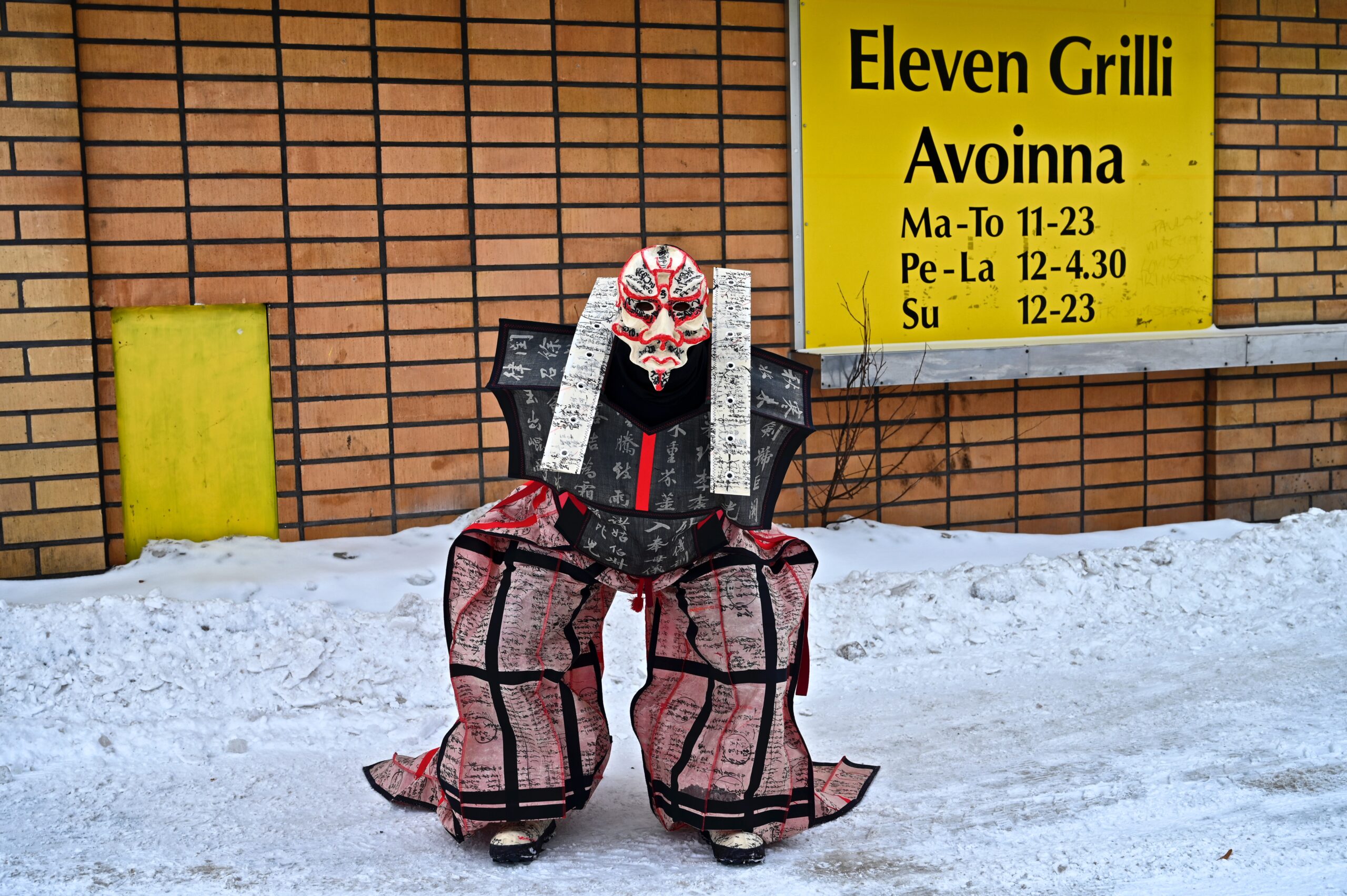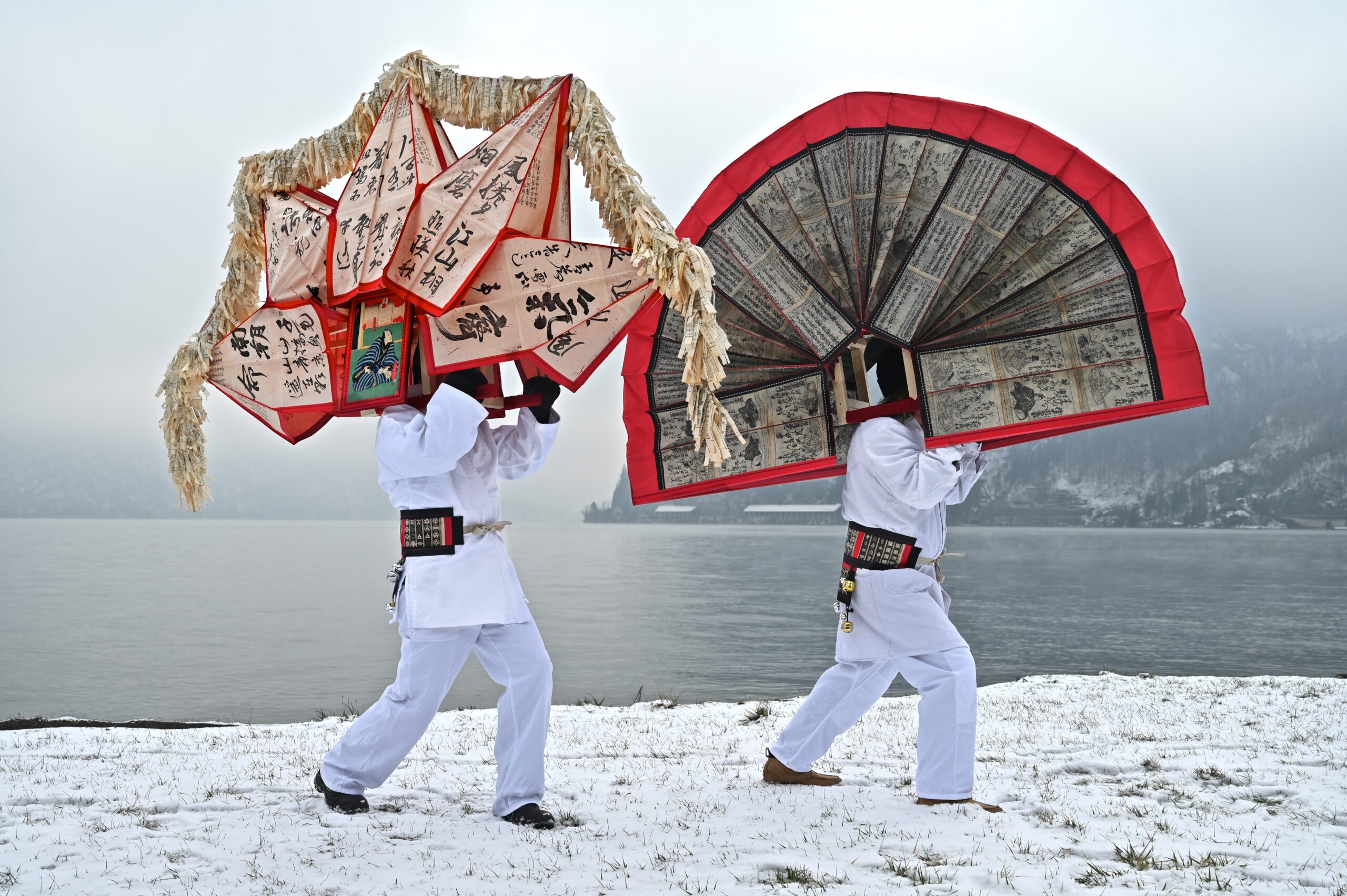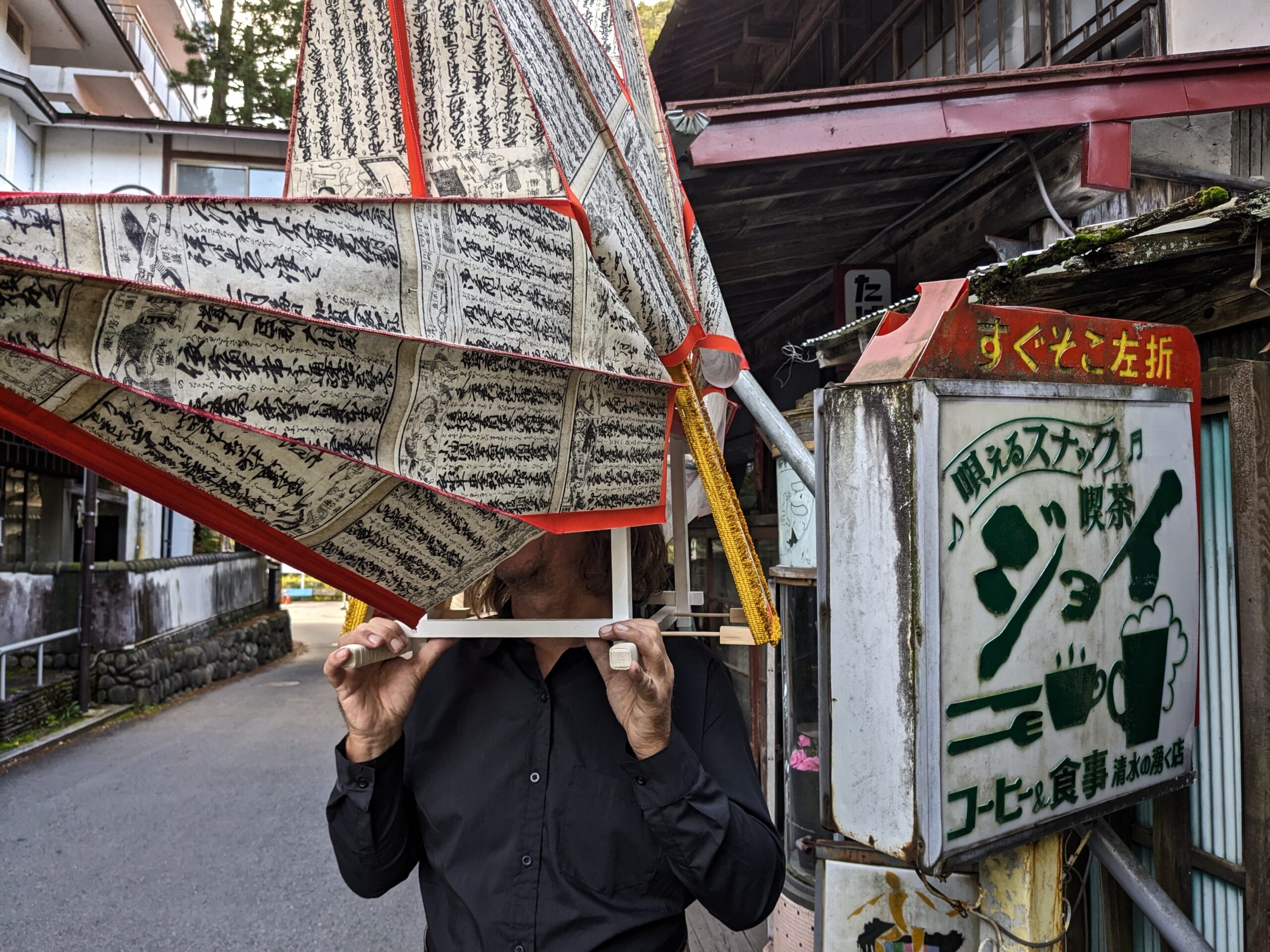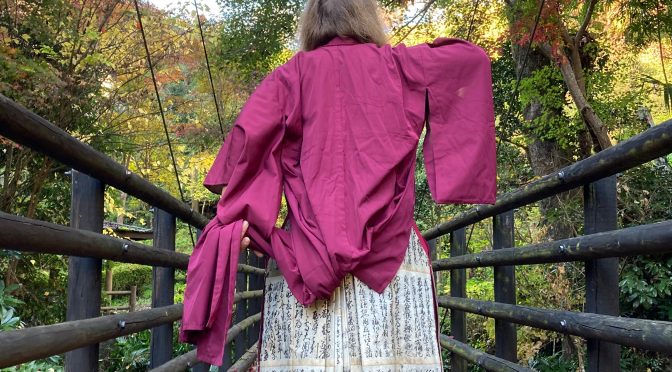Performance
-

Marque de sorcière | Valais CH
03-06.2024 | The project “Marque de Sorcière” took place in Valais, where the first witch hunts took place around 1430, when catastrophes, illnesses and mysterious deaths required an explanation. Rumours played a fundamental role in the persecution of witches and the accusations usually came from the population. People who behaved strangely or had special knowledge…
-

Kabuki on Ice | Mänttä FI
12.2023 -02.2024 | Being invited to Finland for some workshops I also found time to execute some new designs of Japanese paper fashion. The Serlachius Foundation hosted me with a spacious workspace and next to the residency we found some opportunities to do different photo shootings in the cold Finnish winter.
-

Glöckler EU | Salzkammergut AT
10.01.23 Austria | Thanks to my family and friends, I was able to complete and present my two new works at the Traunsee in this beautiful winter landscape. The location is in view of the Villa Pantschoulidzeff, where the exhibition “How Scurrealism comes into the world” will open in May. As part of the EU…
-

Nakanojo • Performance | Gunma JP
10.10 – 12.10.23 Japan | After finishing the Biennale we could do some first performances at Haruna Lake, the rice fields surrounding Gotonda, in Shima the Onsen Village and at the Oyato Shrine near the exhibition space. The “Glöckler” project was a mere success with a couple of follow up exhibitions planned for 2024.
-

Shelter of the Mind | Salzkammergut AT
Februar 2023 | What protects us also hides us from ourselves. Only in the images do we free ourselves vicariously from our bodies, to which we distance ourselves in our gaze. #Cap of Truce – Headgear and trousers made from antique Japanese washi paper. #Identity of the Wind – Sashimono 指物 styled banner from antique washi…
-

Performance | Onishi JP
October 2022 | To prove the liability of garment and design we test some prototypes. These are drafts for the next projects in 2023 when a lot of my projects will deal with performance, mostly executed by local dancers and amateurs.
-

Performance | Mänttä FI
March 2022 | Ahead of the exhibition, we were able to test some of the wearable sculptures. Made of paper, they had to withstand the harsh environmental conditions of the Finnish winter. Flexibility and robustness are the essential criteria in handicraft production, as the design must also be suitable for later performances.